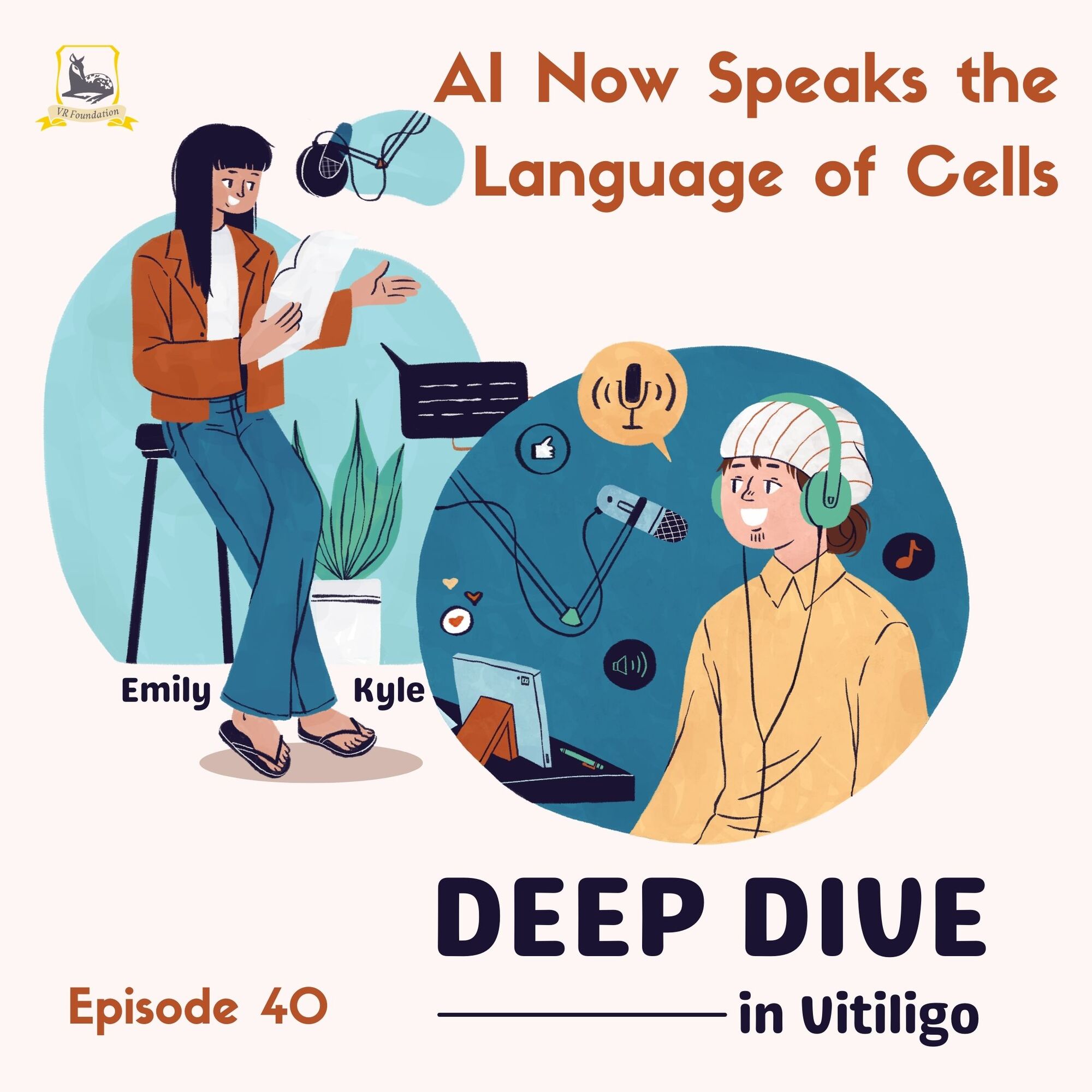Our work is entirely funded by private donations – we receive no money from government. Your money will help us continue funding research into vitiligo and supporting people affected by the condition.
Podcast
AI Now Speaks the Language of Cells (Ep. 40)
Can an AI “talk” to cells? Yes—sort of.
This over-the-horizon episode spotlights a breakthrough open model family that turns single-cell RNA-seq into readable “cell sentences,” unlocking plain English Q&A, fast summaries, and even simulations of cell responses to drugs or edits.
Think of it as the next chapter after our vitiligo.ai experiments — a glimpse at making biology a conversation everyone can join.


FAQOther Questions
- How can I cure vitiligo?
Currently, there is no cure for vitiligo. However, many treatments can help manage the condition by restoring skin pigmentation, halting the progression of depigmentation, and i...
- Any link between vitiligo and military service?
While there isn't specific research directly linking military service to the onset of vitiligo, it's critical to comprehend that vitiligo is a multifaceted disorder influenced b...
- Can Ayurveda help with vitiligo?
Vitiligo is an autoimmune condition characterized by white patches of skin that can develop and spread unpredictably. While there is no cure, medical treatments and complementar...
Though it is not always easy to treat vitiligo, there is much to be gained by clearly understanding the diagnosis, the future implications, treatment options and their outcomes.
Many people deal with vitiligo while remaining in the public eye, maintaining a positive outlook, and having a successful career.
Copyright (C) Bodolóczki JúliaBy taking a little time to fill in the anonymous questionnaire, you can help researchers better understand and fight vitiligo.